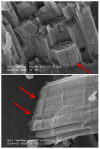Use of Bio-Epoxies and Their Effect on the Performance of Polymer Composites: A Critical Review
- PMID: 38139984
- PMCID: PMC10747679
- DOI: 10.3390/polym15244733
Use of Bio-Epoxies and Their Effect on the Performance of Polymer Composites: A Critical Review
Abstract
This study comprehensively examines recent developments in bio-epoxy resins and their applications in composites. Despite the reliability of traditional epoxy systems, the increasing demand for sustainability has driven researchers and industries to explore new bio-based alternatives. Additionally, natural fibers have the potential to serve as environmentally friendly substitutes for synthetic ones, contributing to the production of lightweight and biodegradable composites. Enhancing the mechanical properties of these bio-composites also involves improving the compatibility between the matrix and fibers. The use of bio-epoxy resins facilitates better adhesion of natural composite constituents, addressing sustainability and environmental concerns. The principles and methods proposed for both available commercial and especially non-commercial bio-epoxy solutions are investigated, with a focus on promising renewable sources like wood, food waste, and vegetable oils. Bio-epoxy systems with a minimum bio-content of 20% are analyzed from a thermomechanical perspective. This review also discusses the effect of incorporating synthetic and natural fibers into bio-epoxy resins both on their own and in hybrid form. A comparative analysis is conducted against traditional epoxy-based references, with the aim of emphasizing viable alternatives. The focus is on addressing their benefits and challenges in applications fields such as aviation and the automotive industry.
Keywords: bio-based thermosets; cardanol; glass transition temperature; impact properties; lignin; mechanical properties; natural fibers; thermal properties; vegetable oils.
Conflict of interest statement
The authors declare no conflict of interest.
Figures










References
-
- Lapique F., Redford K. Curing effects on viscosity and mechanical properties of a commercial epoxy resin adhesive. Int. J. Adhes. Adhes. 2002;22:337–346. doi: 10.1016/S0143-7496(02)00013-1. - DOI
-
- Sukanto H., Raharjo W.W., Ariawan D., Triyono J., Kaavesina M. Epoxy resins thermosetting for mechanical engineering. Open Eng. 2021;11:797–814. doi: 10.1515/eng-2021-0078. - DOI
-
- Rahman M., Islam M.A. Application of epoxy resins in building materials: Progress and prospects. Polym. Bull. 2021;79:3926–3938. doi: 10.1007/s00289-021-03577-1. - DOI
-
- Zaokari Y., Persaud A., Ibrahim A. Biomaterials for Adhesion in Orthopedic Applications: A Review. Eng. Regen. 2020;1:51–63. doi: 10.1016/j.engreg.2020.07.002. - DOI
Publication types
LinkOut - more resources
Full Text Sources

